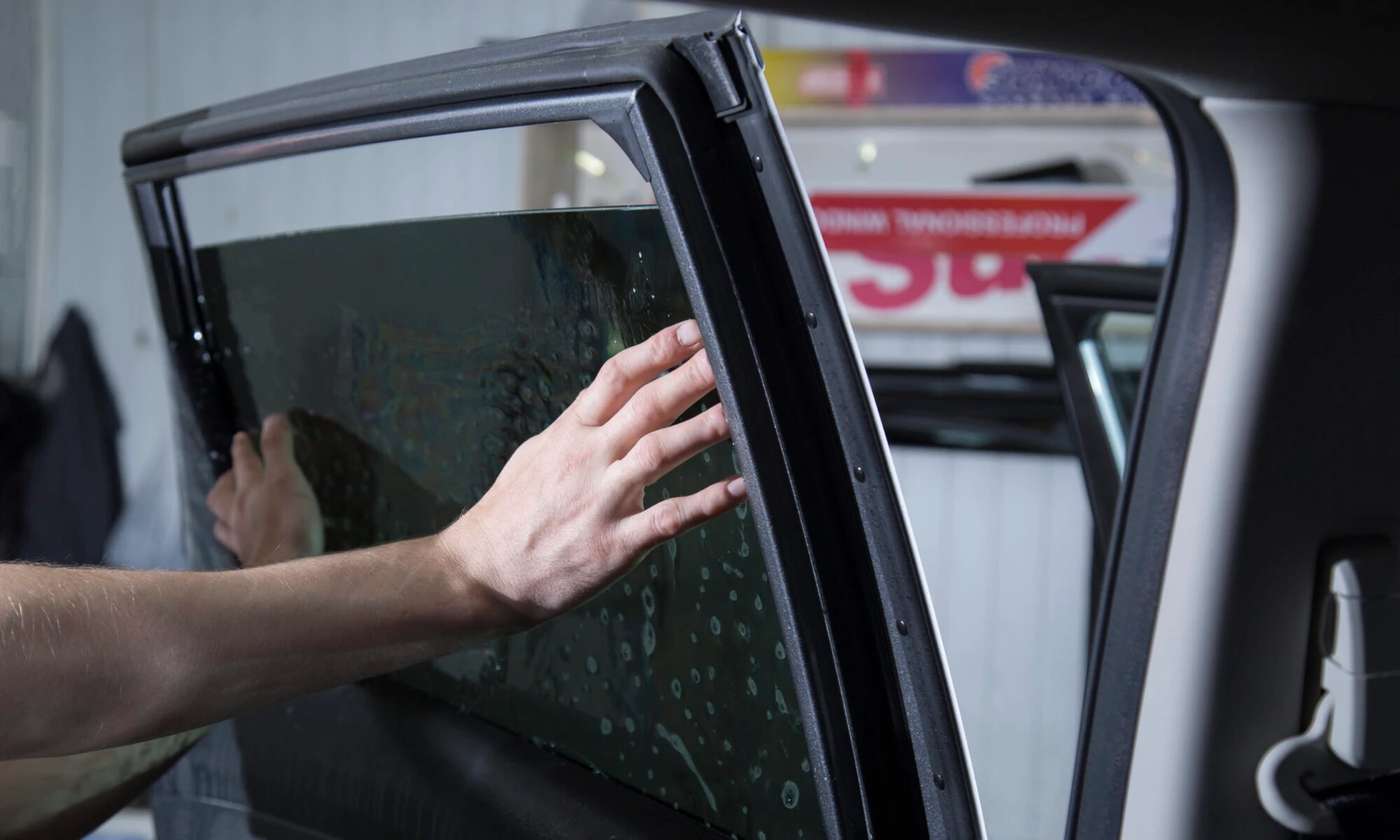The Refine of Specialist Window Tinting Explained
From picking the right movie kind to the thorough prep work of home windows, each action plays an important role in attaining a flawless application. Following these preliminary prep work, the cautious cutting and application of the film demand accuracy to avoid imperfections.
Picking the Right Home Window Movie
The initial factor to consider is the type of film, which can vary from colored, metalized, to ceramic movies (window tinting). Dyed films largely give privacy and aesthetic enhancement, while metalized films show warmth and UV rays, boosting power performance.
Following, consider the movie's Visible Light Transmission (VLT) portion, which figures out how much light enters the room. A lower VLT offers greater personal privacy and heat rejection yet may reduce all-natural light considerably. In addition, the movie's solar warmth gain coefficient (SHGC) is crucial; a lower SHGC indicates better thermal performance, helping to keep interior comfort.

Preparing the Windows
Once the appropriate home window film has been chosen, the following step is completely preparing the home windows for installation. This prep work is vital for achieving optimum adhesion and ensuring a remarkable look post-installation.
The very first job includes cleaning the windows thoroughly (window tinting). A high-quality glass cleanser is necessary, preferably one that is ammonia-free to prevent destructive any kind of home window seals or color materials. Making use of a lint-free cloth or paper towels, technicians must get rid of any type of dust, dust, or oil, paying unique attention to the sides and edges where debris commonly gathers

Cutting the Film
An accurate approach to reducing the movie is vital for making sure an excellent fit on the prepared home windows. This step needs both ability and focus to detail, as mistakes can result in unpleasant gaps or overlaps that concession the aesthetic and functional qualities of the color.
Prior to reducing, the professional should gauge the window dimensions properly, making up any type of one-of-a-kind forms or contours. It is advisable to make use of high-grade window film, as this material tends to be a lot more forgiving during the cutting process. The film is commonly laid flat on a clean, smooth surface, and a sharp utility blade is used to ensure clean sides.
To achieve optimum results, several professionals make use of templates developed from previous setups or make use of software to make exact patterns. A typical method includes including an additional margin to the layout, enabling modifications throughout the application stage.
In addition, reducing the movie in a controlled environment minimizes the risk of pollutants influencing the sticky side. By adhering to these careful methods, home window tinting experts can make sure that the movie not just fits seamlessly but additionally executes efficiently over time, boosting both appearance and capability.
Applying the Color
After meticulously reducing the film to the correct measurements, the next action involves using the tint to the home window surface. This process begins with guaranteeing that the window is tidy and cost-free from any type of dirt, debris, or deposits that might influence attachment. A specialized cleaning service is usually utilized, adhered to by complete drying with a lint-free towel.
When the surface area is prepared, the installer will very carefully place the tint film versus the glass. It is critical to line up the movie properly to stay clear of misplacement, as any mistakes can lead to a less than professional look. To promote this, the installer may utilize a light haze of application option on the sticky he said side of the movie, enabling mild repositioning if required.
Using a squeegee, the installer will certainly after that begin to press the film onto the glass, working from the facility in an outward direction to eliminate air bubbles and ensure a company bond. This technique is critical, as it guarantees a smooth and perfect coating. Throughout the application, interest to information is vital to stop creases or imperfections, guaranteeing that the tint not just improves looks yet additionally supplies the preferred capability.
Last Examination and Treatment
The last evaluation is a crucial step in the home window tinting procedure, making sure that the setup satisfies both aesthetic and functional standards. During this stage, experts thoroughly analyze the installed color for any imperfections, such as bubbles, folds, or imbalances. A thorough evaluation also consists of checking the adherence of the film to the glass, as well as its harmony and total look.
After the assessment, correct treatment and upkeep directions are supplied to the customer. It is important to inform them about the suggested timeline for cleansing the colored windows, normally encouraging a wait of at the very least thirty days after installment to permit the glue to treat completely. Clients should be informed on appropriate cleansing products and strategies, stressing the evasion of ammonia-based cleansers that can harm the color.
Furthermore, experts need to suggest clients on the relevance of regular maintenance to prolong the life of the color. This consists of routine look for indicators of wear or damage and responding quickly to i thought about this any type of concerns. By ensuring a detailed final inspection and providing clear treatment guidelines, home window tinting specialists enhance client satisfaction and the durability of their work.
Conclusion
The expert window tinting process includes a number of discover this critical actions that ensure top quality results. Picking the proper movie type, preparing the home windows thoroughly, accurately reducing the film, and using it with precision are important for achieving a perfect surface. A comprehensive final evaluation assurances that all requirements are fulfilled, while proper post-installation care is important for preserving the tint's longevity and performance. Abiding by these treatments inevitably boosts both the aesthetic appeal and capability of the colored home windows.
Comments on “Specialist vs Do It Yourself Window Tinting: Which Alternative is Right for You?”